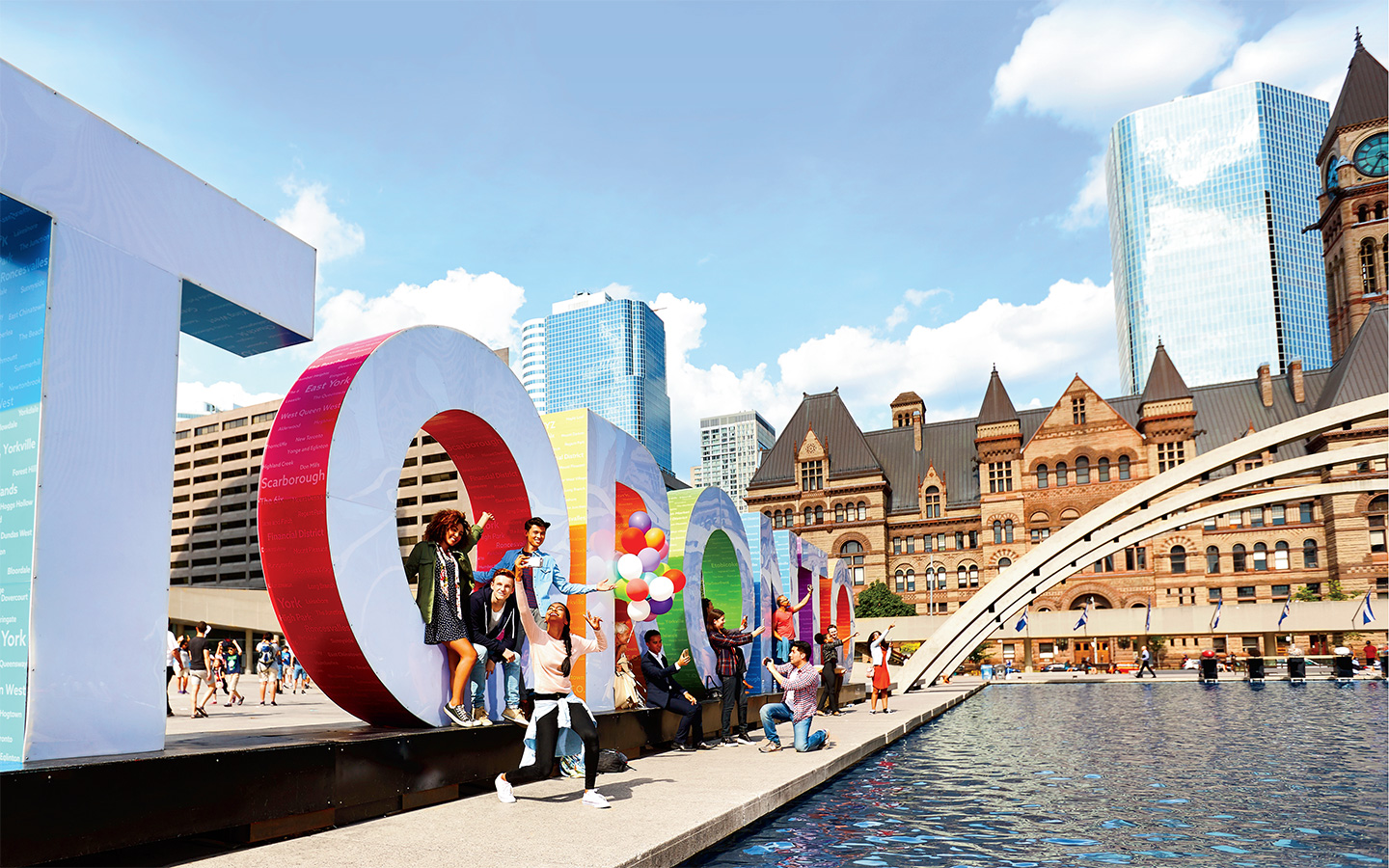The Toronto Experience

A city as large and cosmopolitan as Toronto can be hard to define, and with Toronto’s diversity, no single definition can be possible, and it instead becomes more important to ask what the city means to individuals within it. The Innis Herald did just that: Here are some Innisians’ takes on “The Toronto Experience.”
Grace Kovacs | 1st year | Humanities | Huntsville, Muskoka Region
“Very inclusive to everybody.”
According to Grace, Toronto’s diversity is explained by the fact that “there’s just so many different people here. In the streets, there are people that you’re never going to see again, and there are especially a lot more in your specific community. The more people you have together, the more comfortable you are.” The general atmosphere is also friendly, and though she can’t speak to the tourist experience, she has helped out a few travellers, which to her showed that “people aren’t too afraid to approach people in Toronto for help, which is also good!”
The streamlined nature of the city makes everything close and accessible, whether that means cultural hotspots like the Art Gallery of Ontario, quirky shops like TOT: The Cat Café, or mental health and sexual assault services. “[Availability of resources] ties into diversity and accessibility for those who need it, and I think that’s really good!”
Of course, Toronto does have at least one major shortcoming: “Everything is so expensive! There’s so much money I’m draining in just buying a coffee!”
James Chapman | 3rd year | Urban Studies, Political Science, and Geographic Information Systems | Toronto (Scarborough)
“Toronto is like a city of neighbourhoods.”
“It’s a deserving reputation that [Toronto] carries itself with a certain elitist, ‘we know better’ kind of thing,” according to James. “I think Toronto is an economic powerhouse […] and an important liberal city in its values; but I do think Torontonians are very arrogant in what they think is right, especially in values.”
Politeness would be one of these values, which James imagines as a “beautiful blend” with efficiency. “People are moving through corridors very quickly downtown, but people still make an effort to hold the door now and then…on transit it’s like pushing and shoving but it’s not an aggressive pushing, it’s a necessity, so it’s like an efficiency.”
The public transit system itself, though, is extremely inefficient and requires “serious investment, sooner than later to ensure that […] it doesn’t take two hours to get from Scarborough to downtown.” Biking is James’ preferred method of travelling the park network or visiting Toronto’s neighbourhoods like St James Town and Cabbagetown.
Living in the city has guided James’s access to opportunities such as internships and political fields, the latter of which can be found in “whatever flavour you were looking for.” This comes in part from individuality and diversity being important Torontonian values—but doesn’t detract from there being “a big sense of community in Toronto. […] People are proud of what they think of their city and I think that’s how a community in itself is built.”
Khushi Dutt | 1st year | Social Sciences | Mumbai, India
“Best of both worlds.”
Coming from a city with a diverse population herself, Toronto’s cultural heterogeneity felt familiar to Khushi. What stood out as unique about Toronto is that though it has the “main city vibe, it’s also […] really green and pretty, so you get the best of both worlds.” She particularly admires the street art that “increases the artsy value of the entire place, [as well as] the fact that the natural beauty of Toronto is saved, and that it hasn’t completely turned into a concrete jungle.”
While she thinks Toronto’s reputation of “niceness” is a bit inflated (“it’s just like a normal situation”) she feels that its citizens are friendly and eager to help, and though the first few weeks were overwhelming, it doesn’t take long to adjust to the city. More problematic is the “really annoying” weather that fluctuates so often that it becomes impossible to decide how to dress for the day. Minor annoyances such as these are partially offset by hidden treasures, such as Carole’s Cheesecake Café, a place with which Khushi is “genuinely in love.”
Sarah Chocano | 2nd year | Anthropology, Latin American Studies, Art History | Peru
“It’s a city for everyone.”
Though the sprawling city “where everyone doesn’t know everyone” was starkly different from her small, close-knit community in Peru, Torontonians’ famous politeness and kindness soon helped Sarah feel at home here. Accessibility to basic needs, as well as public transportation systems like the TTC are also part of the “combination that makes [Toronto] newcomer-friendly.”
Sarah appreciates that Toronto isn’t just a city lined with high rises and freeways. “Around downtown is really green, there are a lot of parks, [and] little stores. I really like that kind of contrast.” It’s also a great city for walking, whether that be to Cosmic Treats, a vegan restaurant and dessert bar in Kensington Market, or wandering down Queen Street West to find shops and restaurants from all around the world.
For Sarah, the best thing about Toronto is the variety in everything from festivals to personalities—but on the flip side, she feels that Toronto is still “a really big city and I […] want to go everywhere, [even though sometimes] I can’t because I’m a student—I don’t have that time!”
